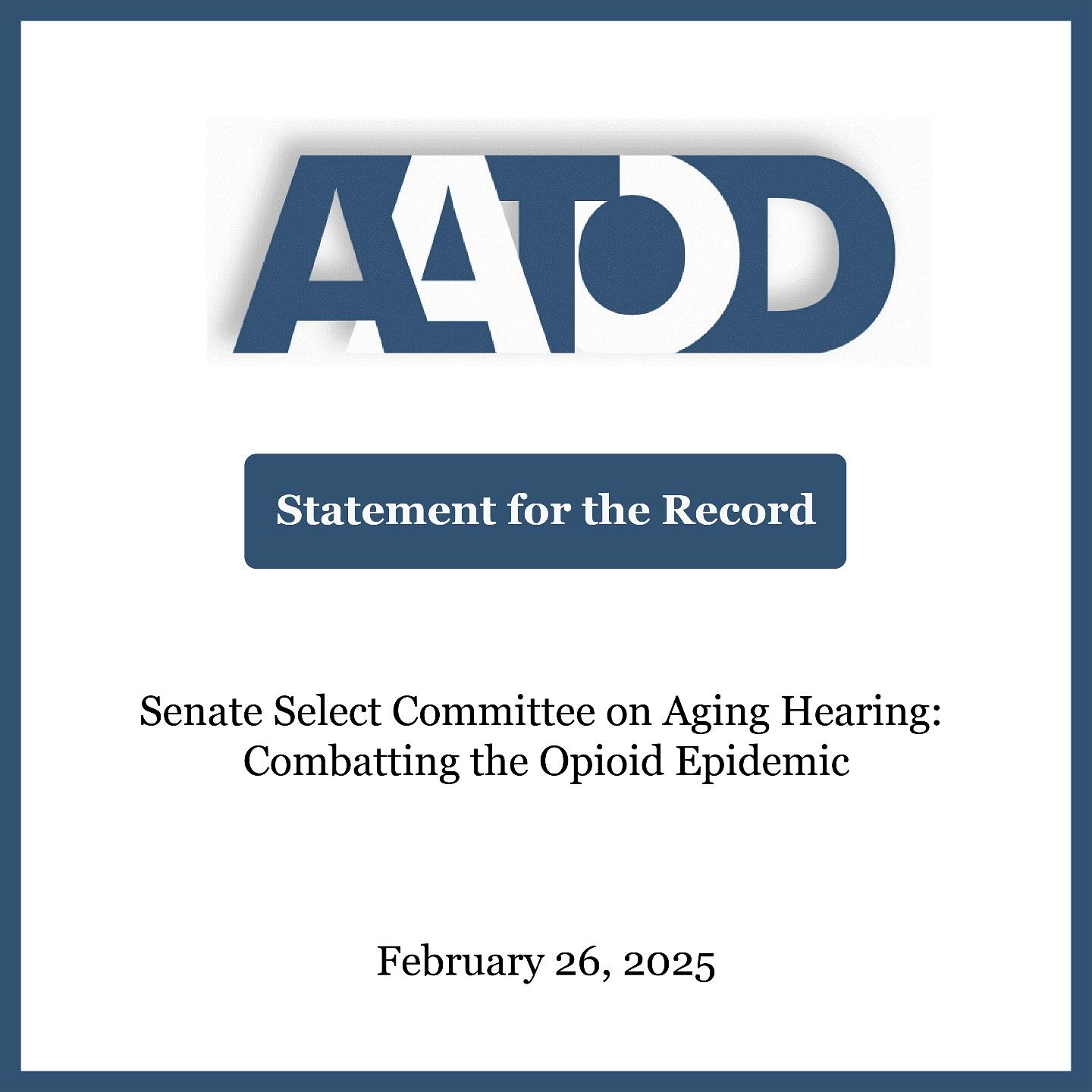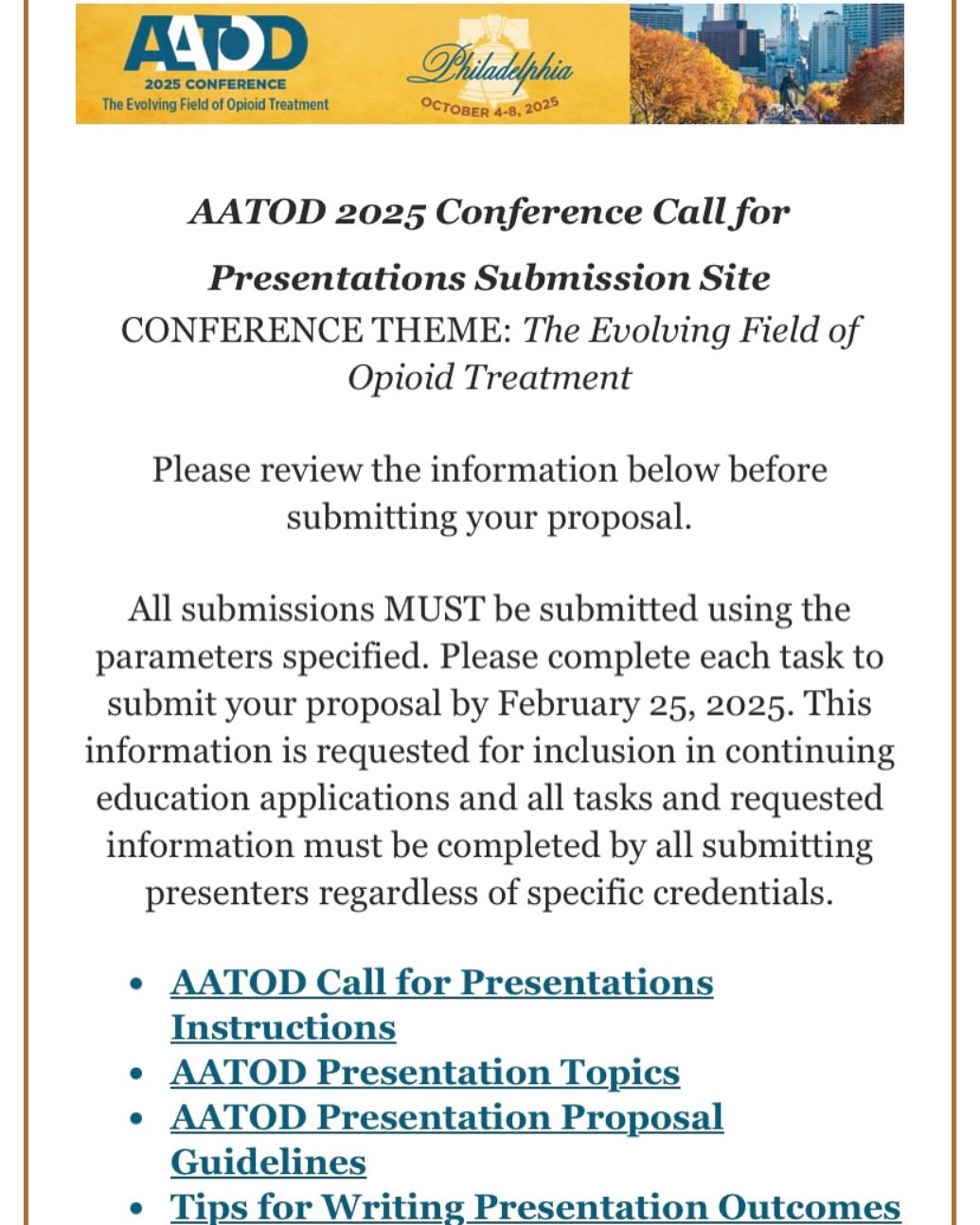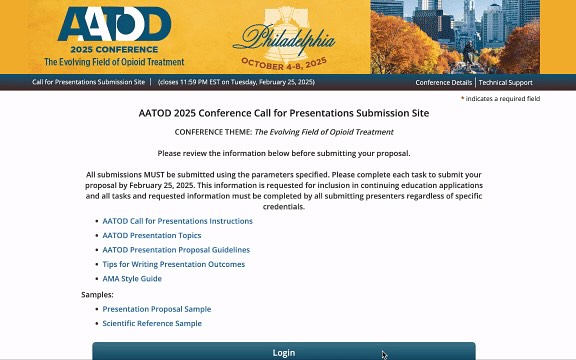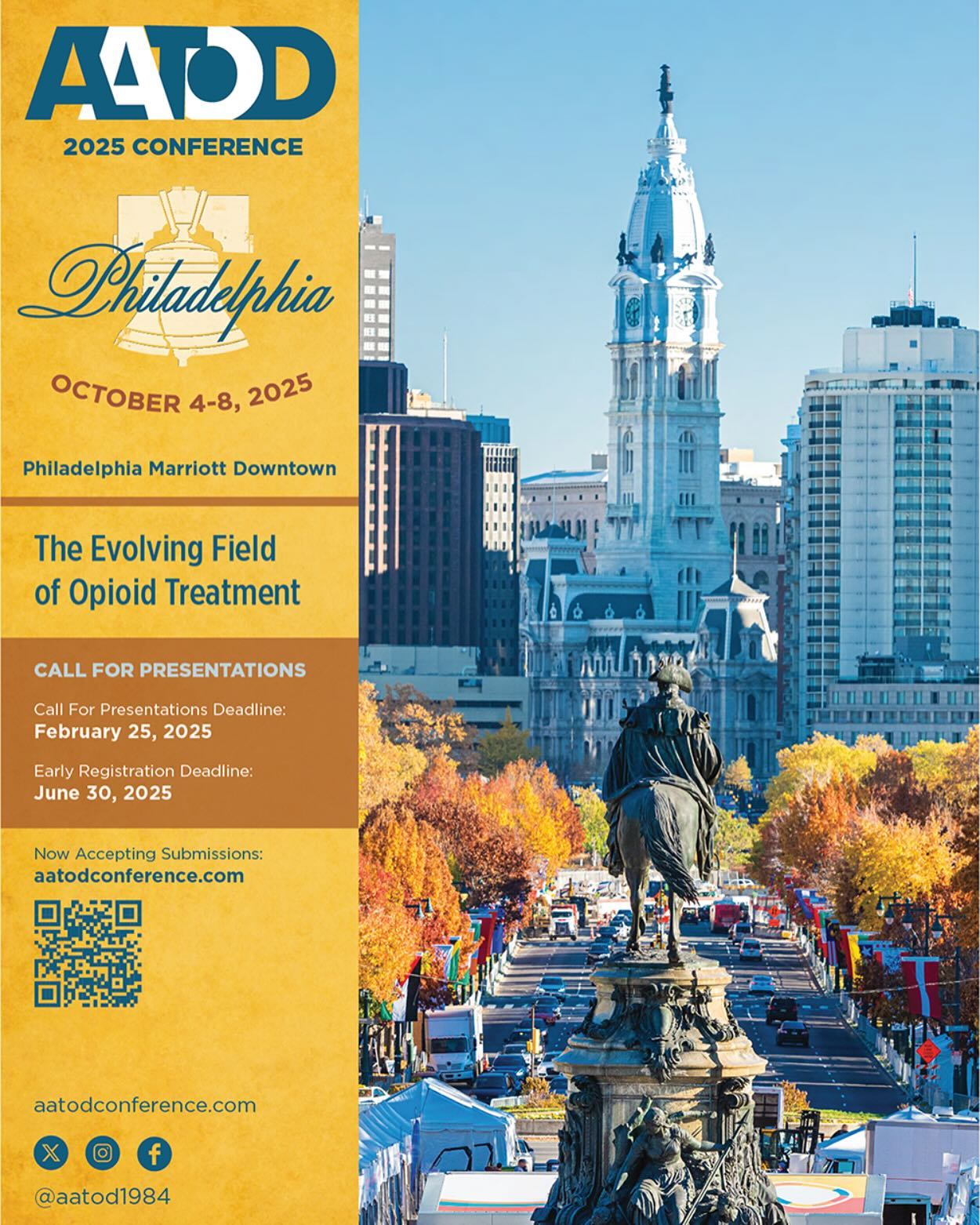Introduction
The AATOD Board of Directors are of the judgment that it is important for our statewide and individual members in addition to our policy partners to understand some of the challenges and the solutions that have defined our Association for the past quarter century. As a point of reference for what follows, AATOD was founded as the Northeast Regional Methadone Treatment Coalition in 1984. The Regional Coalition evolved into the American Methadone Treatment Association (AMTA) following the inaugural national conference of 1991 in Boston as an increasing number of state chapters joined the Association. AMTA transformed into the American Association for the Treatment of Opioid Dependence (AATOD) in 2001 following our national conference in St. Louis, reflecting our Association’s broader mission and the use of newly developed medications to treat chronic opioid addiction.
As you read what follows, please keep in mind that there is a greater sense of community among treatment providers, federal and state officials, patient advocates, corporate partners, and other critical stakeholders in our field when compared to 1984. This community represents an intangible but valuable asset since it was not present three decades ago when providers and other stakeholders were working in far greater isolation.
The Challenge: The Dark Period of the 1980s
There were increasingly negative views about the value of methadone treatment during the 1980s. The brilliance and promise of the research of the 1960s, and the rapid expansion of methadone treatment during the 1970s began to fade with negative community reactions against the presence of methadone treatment programs (The Washington Times, “Methadone: A Failed Cure”, 1984). One of the most damaging media reports about methadone treatment was published during 1983 by the Fort Lauderdale News and Sun-Sentinel, “Methadone, the Deadly Cure”. The editor’s cover letter to the series was stark:
“The public doesn’t care very much about methadone patients. They don’t enjoy a very good reputation, nor do they get much sympathy.
Indeed, the nationwide program to treat heroin addicts with methadone was not set up with the idea of doing something to help addicts. It was touted as a way to protect society, to keep addicts from committing crimes.”
The report combined fact with fiction over a series of articles, which was sent to members of Congress, governors, and state legislators. It represented a major challenge to the future of the existing treatment system, and also preceded a decline in the number of treatment programs that were available, decreasing access to patient care. It was clear that no single state association could respond effectively to this kind of threat.
Solution
The Northeast Regional Methadone Treatment Coalition was created in 1984, growing out of the early organizing efforts of the New York State Committee of Methadone Program Administrators. There were nine founding member states of the Northeast Coalition, representing some of the most methadone treatment-populous states in the country (Connecticut, Delaware, Maryland, Massachusetts, New Jersey, New York, Pennsylvania, Rhode Island, and Washington D.C.). It was also decided that it would be best to build on the format of the prior statewide methadone conferences in New York transitioning to the Northeast Regional conferences as a means of organizing the field, training treatment providers, and drawing on evidence-based practices as a means of moving the field forward. The Northeast Regional conferences began in 1984 in New York and ended in 1989 in Rhode Island.
These conferences were the precursors to the national conferences of the present era, and successfully organized the field of methadone treatment providers, researchers, corporate interest groups, policy makers, and patient advocacy groups.
The national conferences served as a launching pad for many of the Association’s critical training initiatives. The first initiative was the Clinicians Course, introduced at the Washington, DC conference of 1994. This course instructed medical and clinical personnel in the Opioid Treatment Program (OTP) environment, and has continued to the present day through the National Institute on Drug Abuse (NIDA) funding. Hundreds of treatment practitioners have been trained as a result of this opportunity. The Media Training event was launched at the Washington, DC conference of 2003, and has resulted in hundreds of practitioners and patient advocates being trained in how to communicate more effectively with media in presenting the value of what we do. The Risk Management course was launched in 2004 in Orlando, Florida after years of working with professional liability insurance companies and treatment providers to determine best methods of reducing the risk of litigation and claims made against OTPs. The Hepatitis C Training was also launched in 2006 at the AATOD conference in Atlanta with SAMHSA/CSAT support, in training OTP clinical staff in better understanding the risks for patients with hepatitis C, and methods of preventing and treating the illness through the clinic environment.
These conferences also led to the expanding organization of our field in different states and in working with our European associates, which began during the 1989 conference in Rhode Island, and continues through the present time. It also led to the development of a formal working relationship between the European Opiate Addiction Treatment Association (EUROPAD) and AATOD, and the formation of the World Federation for the Treatment of Opioid Dependence (WFTOD) during July of 2007.
The full-time AATOD national office was opened on January 1, 1995, and resulted in a more strategic organization of the field for individual membership and the expanded development of state associations within AATOD. The AATOD Board of Directors subsequently developed policy and clinical guidance statements for the field, which have been disseminated through the AATOD website and email blasts.
The organizing of the field has been successfully achieved, increasing from the nine original founding states in 1984 to 29 state associations in 2010, in addition to admitting Mexico to the AATOD Board of Directors.
What May Have Happened If AATOD Had Not Acted
In the judgment of the AATOD Board of Directors, without the organizing initiatives of AATOD, the field of opioid addiction treatment would have diminished in importance and would have been subject to dissolution through various federal and statewide legislative challenges. Additionally, treatment personnel would not have been as well informed about new developments in effective therapeutic patient care.
The Challenge: Critical Reports of the Treatment System
Methadone treatment programs were being seen in an increasingly critical light through research and external federal oversight reports. Dr. John Ball and his associates published a series of seminal articles indicating that program characteristics, as opposed to patient characteristics, formed a critical basis of predicting patient success in treatment (“Reducing the Risk of AIDS Through Methadone Maintenance Treatment”: Journal of Health and Social Behavior, 1988). Dr. Ball cited stable program management, the implementation of therapeutic dosing practices, hiring and retaining trained personnel, and having sound fiscal management as a basis for greater patient success in treatment. The General Accounting Office (GAO), at the behest of the Congressional Select Committee on Narcotics Abuse and Control, published a report in 1990, “Methadone Maintenance – Some Programs Are Not Effective; Greater Federal Oversight Needed”, which delivered a particularly stinging commentary about the efficacy of methadone treatment programs in the United States. The GAO evaluated 24 programs in eight states and determined that there was widespread subtherapeutic dosing so that patients continued to abuse heroin and other drugs. They were also critical of the Food and Drug Administration (FDA) for its lack of oversight of treatment programs, and recommended a more outcome-based series of federal oversight initiatives, which would guide and improve patient care. Additionally, the Drug Enforcement Administration (DEA) was imposing significant fines against OTPs for lack of compliance with DEA regulations.
Solution
AATOD created the blueprint for the first comprehensive clinical practice guidelines, which would be used to guide treatment programs and other practitioners. AATOD brought the concept to the Center for Substance Abuse Treatment (CSAT), which formed the basis of publishing the first Treatment Improvement Protocol (TIP), “State Methadone Treatment Guidelines”, which were officially published in 1993, but were released during the American Methadone Treatment Association (AMTA) conference in 1992 in Orlando Florida.
This represented the first comprehensive clinical compendium to guide treatment programs in therapeutic decision-making, including Treating Pregnancy, Infectious Disease, Methadone Dose Determination, and Treating Multiple Substance Abuse, to cite a few of the chapters. SAMHSA/CSAT later emerged as the entity which would assume federal oversight responsibility for OTP clinical practices from the FDA following the publication of the Institute of Medicine Report of 1995 (Federal Regulation of Methadone Treatment). The oversight transition was officially concluded during 2001, and CSAT published a broad series of TIPs and Technical Assistance Publications (TAPs) to guide therapeutic decision making for the field. AATOD supported this regulatory transition.
It is reasonable to conclude that SAMHSA/CSAT’s publication of the State Methadone Treatment Guidelines laid the groundwork for a more outcome-based system of federal regulatory oversight, and improved treatment for patients.
The Association also worked with the leadership of the DEA from 1998-2000 in developing DEA’s “Best Practice Guideline for Narcotic Treatment Programs”, which were released during AATOD’s national conference in 2000 in San Francisco. This publication built on AATOD’s long-term relationship with the DEA, both in Washington and in regional offices throughout the United States, and led to improved program compliance with DEA regulations governing OTPs.
What May Have Happened If AATOD Had Not Acted
In the opinion of the AATOD Board of Directors, had the first TIP not been published, the field would have continued to drift toward more idiosyncratic and substandard treatment practices, which would have resulted in poor patient outcome in addition to more restrictive federal regulatory intervention. Quality of care would have continued to deteriorate and the integrity of the treatment experience would have been compromised.
The DEA fines against programs would have continued. The public perception of the quality of methadone maintenance treatment would have further eroded. Treatment and therapeutic decision making within the OTP environment would have steadily worsened, and a greater number of lawsuits would have probably driven many of the treatment providers out of the system, limiting access to care.
The Challenge:
Professional Liability Premiums Were Increasing Professional liability insurance companies began to experience a hardened market that caused subsequent and major increases in premiums to OTPs, the elimination of certain covered categories, and the increased utilization of less protective claims-made policies for treatment programs. The hardening of this market (increasing premiums) had the greatest impact in the late 1980s.
Solution:
The Northeast Regional Methadone Coalition began to work with insurance representatives (David Szerlip & Associates) and other professional liability companies to educate insurance underwriters about opioid addiction treatment and bring new firms into the marketplace. The Regional Coalition conducted insurance surveys among its members to establish the first independently created claims database, which was shared with the professional liability market. As a result, new companies entered the marketplace, premiums began to decrease, occurrence form liability policies became widely available, and there was a decreased danger of eliminating other insured categories, such as treating pregnant patients.
What May Have Happened If AATOD Had Not Acted
Insurance premiums would have increased sharply. Claims-made policies would have continued to be dominant in the marketplace, and there would have been greater elimination of covered practices in the OTP environment. It is safe to suggest that there would be fewer professional liability carriers in the United States and a number of programs would have been closed due to litigation or lack of affordability of an insurance product. Accordingly, OTPs have saved millions of dollars in professional liability insurance premiums during the past two decades.
The Challenges: Methadone Product Prices Were Increasing-Potential Methadone Shortage Threatened Product Supply
Prices of methadone products for OTPs increased significantly (1989-1990) placing strains on program budgets.
The United States also faced its first potential major methadone product shortage in 2001. One of the methadone manufacturers experienced regulatory problems, which prevented them from shipping product, thereby severely threatening the supply to the marketplace.
Solution
The Association encouraged a new manufacturer to enter the market in 1991, and methadone product prices stabilized through a more competitive marketplace. OTPs saved millions of dollars over the course of the past two decades.
In reaction to the shortage threat of 2001, AATOD worked with all of the manufacturers and relevant federal agencies with jurisdiction in this area, principally through the FDA and DEA, to prevent a disastrous shortage of methadone products. There was no shortage of methadone products in the United States as a result of this intervention.
What Would Have Happened If AATOD Had Not Acted
The price of methadone products would have significantly increased in the U.S. The treatment programs in the United States would have experienced the first major interruption in availability of methadone products. Patients would not have been treated since there would have been no methadone to be shipped to many OTPs in the United States. This would have affected a large number of OTPs and thousands of patients would have had interrupted treatment.
The Challenge: Legislative Restrictions Affecting Patients and Programs
State legislators and municipalities were passing restrictive legislation and zoning ordinances, which sought to curtail the availability of methadone maintenance treatment for chronic opioid addiction. Some state legislatures sought to impose limits on the duration of treatment while other sought to impose limits on the maintenance dosages that could be administered. Some state legislatures sought to limit take-home medication and the location of OTPs. Some states sought to limit how patients could obtain drivers licenses. There was also a federal legislative proposal to restrict Medicaid reimbursement and federal financial support for opioid addiction treatment.
Solution
The Association worked with the National Association of State Alcohol and Drug Abuse Directors, individual state authorities, treatment providers and federal/state legislators throughout the country to better educate state officials about the value of our treatment services. In certain cases, these initiatives represented critical public debates in the media over the course of months.
What May Have Happened If AATOD Had Not Acted
Federal legislation might have passed, ending funding for methadone treatment through block grants and Medicaid. State legislatures may have succeeded in restricting patients being able to hold drivers licenses and treatment programs may have been limited to subtherapeutic dosages and length of time in treatment for patients in a number of states. Ultimately, methadone treatment programs would have been driven out of existence in a number of municipalities.
The Challenge: Lack of Treatment Availability in the Criminal Justice System
The criminal justice system has had a longstanding resistance in using medications to treat chronic opioid addiction. The National Institutes of Health (NIH) published a consensus statement in 1997, “Effective Medical Treatment of Opiate Addiction”. One of the major recommendations to emerge from this publication was to increase access to medication-assisted treatment for chronic opioid addicted people under supervision.
At the present, this continues to be an elusive goal. Many drug court judges will not refer patients to treatment and a number of drug court judges require that stable patients end their treatment as a condition of remaining in the drug court. Very few jails and prisons in the United States offer access to medication-assisted treatment for chronic opioid addiction, and there is a spotty record of support from probation and parole officers to encourage untreated opioid-addicted individuals to enter or remain in treatment.
Solution
AATOD worked with a number of key partners in the criminal justice arena, including federal agencies, pharmaceutical companies and professional criminal justice associations. AATOD wrote the first Drug Court Practitioner Fact Sheet in 2002 for the National Association of Drug Court Professionals (NADCP). The two medications being written about included methadone and buprenorphine, and hundreds of drug court judges and their staff had better access to the facts, countering the popular myths.
AATOD’s President was given a Robert Wood Johnson Foundation Innovators Award, which was matched by Mallinckrodt Pharmaceuticals, and focused on improving access to care in the criminal justice system. This work started in 2004 and continues at present, as AATOD has worked with the Legal Action Center as a method of developing the basis of increasing access to care for the opioid dependent patient population in the criminal justice setting.
AATOD also secured a criminal justice grant from Reckitt-Benckiser in 2010 as a means of increasing an understanding of the value of this treatment intervention. AATOD utilized these funds in developing a survey for drug court professionals, jail representatives and members in the probation and parole association, through its research partner, NDRI, and Brown University during the second quarter of 2011. This will provide many interested parties, federal agencies, and legislators with a better understanding of the attitudes of representatives in the criminal justice entities and develop better educational programs and more enlightened policies to increase access to care to people in need of such treatment interventions. AATOD will plan on using the results of this national survey in working with our policy partners within the White House Office of National Drug Control Policy (ONDCP) and SAMHSA as a means of working with the Department of Justice (DOJ) to increase access to medication-assisted treatment through criminal justice settings.
What May Have Happened If AATOD Had Not Acted
There would be even less interest in the use of medication-assisted treatment in the criminal justice system at the present time. There would be even less understanding among drug court judges and their staff about the use of medications to treat opioid-addicted patients, and there would be even fewer jails providing access to treatment.
The Challenge: Increasing Use/Abuse of Prescription Opioids in the US
Federal agencies expressed concerns in 2002 about the abuse of prescription opioids as a reason for patients entering treatment.
Solution
AATOD did not have any organized system of collecting such data, and we worked with senior officials at Purdue Pharma and senior researchers at NDRI during 2003-2004 to develop a longitudinal method of collecting patient admission data so that we could capture and better understand the changing characteristics and drug using patterns of patients as they enter and remain in treatment. This evolved into the present study, which is conducted under the auspices of the Denver Health and Hospital Authority to evaluate the use of prescription opioids and changing patient characteristics in the OTPs (RADARS® System).
At present, more than 46,000 patients have voluntarily completed survey instruments (2005-present) as they were admitted to 75 OTPs in 34 states. We have also learned that approximately 15% of this patient population cross state lines to access care, providing valuable information to state and federal officials in the event of emergencies and natural disasters. We have also learned a great deal about how patients use and abuse prescription opioids, including a high percentage of patients (35%) who inject such opioid medications.
What May Have Happened If AATOD Had Not Acted
We would still not understand the changing opioid use/abuse trends of patients as they enter and remain in treatment in different regions of the US. We would not have learned about the injection use of such prescription opioids and we would not have learned valuable zip code details about patients crossing state lines to access care.
The Challenge: Increasing Reports of Methadone-Related Deaths
There were increasing reports of methadone-related deaths in 2002. A number of individual and state members within AATOD brought this to the attention of the AATOD Board of Directors. AATOD worked with the Secretary of the Department of Health and Human Services (HHS) and SAMHSA/CSAT to focus on the problem. SAMHSA/CSAT convened the first Methadone Mortality Working Group in 2003, and published a groundbreaking report, demonstrating that OTPs were not primarily responsible for such reports of methadone-associated mortality. It represented the first comprehensive report to indicate that the use of methadone to treat pain had increased markedly through the distribution of pharmacy channels in the United States.
SAMHSA/CSAT subsequently convened two national meetings and produced a second report in 2007. Findings were similar to the original 2003 report. The US Department of Justice – National Drug Intelligence Center published its own report in 2007 (“Methadone Diversion, Abuse, and Misuse: Deaths Increasing at Alarming Rate”) and the US General Accountability Office (GAO) publishing its own comprehensive report in 2009 (“Methadone-Associated Overdose Deaths – Factors Contributing to Increased Deaths and Efforts to Prevent Them”). Once again, the findings were remarkably similar to previous report findings. SAMHSA/CSAT also convened a symposium, “Methadone Mortality – A 2010 Reassessment”, during July 2010, and we anticipate that a written report will be published shortly. The DEA has also been a federal agency partner in the development of the Methadone Mortality Reports and worked with U.S. pharmaceutical companies to restrict the 40 mg methadone dispersible tablet sales to hospitals and Opioid Treatment Programs authorized to treat opioid addiction, effective January 2008.
What May Have Happened If AATOD Had Not Acted
We believe that OTPs would be further marginalized in the United States and discredited as causing methadone-related deaths in the patient population. There would be increasing negative media reports against the siting of opioid treatment programs in the country, and we believe that OTPs would be further diminished since the federal reports would not have been initiated in 2003.
The Challenge: Consistently Negative Reports in the Media About Methadone Maintenance Treatment
The media reports about our treatment system have been primarily negative during the past 30 years.
Solution
AATOD developed the Media Training Course under the sponsorship of VistaPharm and in partnership with Executive Communications Group for the Washington, DC conference of 2003. This followed on the successful work with SAMHSA/CSAT on the development of the first Media Training booklet, which was forwarded to every OTP in the United States, starting with the premiere edition at the AATOD conference in San Francisco of 2000. AATOD also worked with DANYA International to produce “The Joy of Being Normal (2000)”, which was an eight-minute video of three patients and their families, explaining the value of this treatment intervention. It is available on YouTube.
AATOD also provided the opportunity for the National Alliance for Medication Assisted Recovery (NAMA Recovery) to premier their course on advocacy training during the Washington, DC conference of 2003. NAMA has continued their successful training initiatives ever since, and these trainings have been available at every AATOD National Conference.
The media training has continued for program administrators since 2003, and we also initiated work with a number of patient advocates (2009) for their media trainings as a means of better preparing them to work with media in developing positive news stories about their treatment.
What May Have Happened If AATOD Had Not Acted
There would continue to be increasing discord about how treatment providers approach the media. The historic practice of program administrators avoiding any media interaction would have continued. Additionally, a significant number of potentially negative media reports became more balanced through more active engagement of the media.
Summary and Future Initiatives
This document highlights a number of the initiatives as the Northeast Regional Methadone Treatment Coalition, the American Methadone Treatment Association, and the current American Association for the Treatment of Opioid Dependence countered challenges to our field, which threatened our continuity.
In the judgment of the AATOD Board of Directors, if these interventions had not been applied in a creative and consistent way, our treatment system may not have survived. Instead, opioid treatment programs have increased in number over the past decade to a current 1,220 OTPs, which are certified by SAMHSA/CSAT in the United States, treating 270,000 patients on any given day. This is in stark contrast to the system that existed in 1984, when OTPs were diminishing in number. When treatment providers question what the Association has contributed, one simple phrase would apply: enhanced care for patients and the continued viability of our field, which assist patients on their road to recovery.
AATOD is working with all of its policy partners on a number of critical initiatives affecting the future of OTPs in the United States. We are particularly grateful for the work of SAMHSA/CSAT and the Legal Action Center in addition to our policy partners in preparing our field for the impact in health care reform. We are also working with the Alliance of States with Prescription Monitoring Programs and the Brandeis PMP Center of Excellence in developing policy recommendations for our associates in the treatment community as OTPs gain access to PMP databases without compromising federal confidentiality protections for our patients. The AATOD Board believes that PMPs serve as a valuable clinical tool in better informing our clinicians about how to more safely and effectively treat our patients.
We will continue to work with our policy partners in the criminal justice system to expand access to the use of medication-assisted treatment for chronic opioid dependence through drug courts, probation and parole offices, and correctional settings.
We will continue to work with our state regulatory partners, provider colleagues and patient advocates in educating legislative leaders, who have an interest in developing legislation to confront the challenges of opioid abuse. We will also continue to work with our European partner (EUROPAD) in forging a future for the World Federation for the Treatment of Opioid Dependence as we work through the newly approved NGO status by the United Nations to work cooperatively to increase access to care for opioid addicted individuals throughout the world.






























